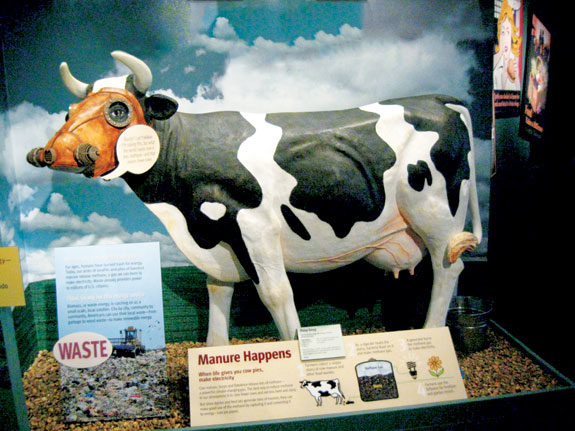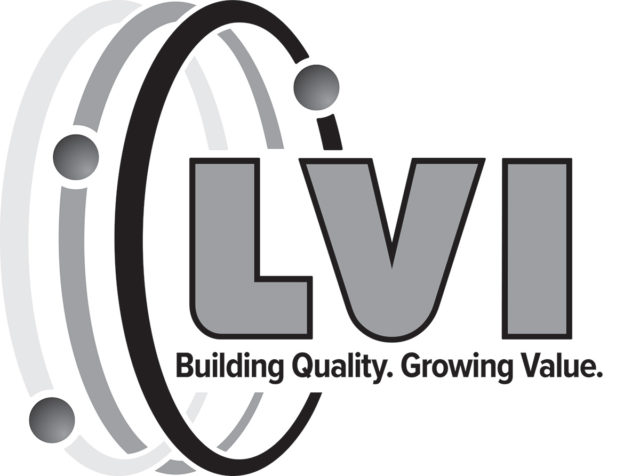Earlier this year the Monterey Bay Aquarium in Monterey, California, opened a new exhibit about climate change. The exhibit originally encouraged visitors to reduce their consumption of milk and meat to mitigate climate change and featured a dairy cow statue wearing a gas mask. On behalf of dairy producers, the California Milk Advisory Board and Western United Dairymen led an effort to change the exhibit, which resulted in changes to the exhibit’s message and the removal of the gas mask. Editor Walt Cooley discusses how the two groups did it.
Q. Describe why dairy cows were featured in an aquarium’s exhibit.

GIAMBRONI: The initial exhibit was focused on climate change and how what happens on the land affects the sea. It suggests positive things people are doing to make a difference and what everyday citizens could do to reduce their carbon footprint.
However, there was this portion of the exhibit that called out dairy as a major climate change contributor. The aquarium used an image that they thought would provoke a conversation, which was a cow with a gas mask, and they also had a lot of negative messaging about dairy and its contribution to climate change. It did not really reflect all of the positive things that our industry has done and continues to do to decrease dairy’s carbon footprint and increase efficiencies.
Q. So tell me how was the existence of the exhibit brought to your attention?
GIAMBRONI: I don’t know the exact date that it opened, but it opened before Earth Day. We got a few calls from producers who said, “Have you seen this exhibit? It has very negative messages about dairy.”

MARSH: I was home on a Saturday, and I got a call from one of my board members. He said, “We’ve got a problem with the Monterey Bay Aquarium.” And he said that there was a gas mask on a cow, and the aquarium was telling people not to consume dairy products and not to consume beef. My board member’s comment was: “What are we going to do about it?” We started looking into it and gathered as much information as we could and then contacted the California Milk Advisory Board, which works on issues management on behalf of our industry. We put together a strategy to try to see if we could get some changes made.
Q. What was your strategy?
GIAMBRONI: The overall strategy was to educate and also open a dialogue with the aquarium. We wanted to go about it in a positive way to share information and see if we could effect change with a reasonable discussion. What we initially did was call them. We said,
“We would like to sit down and talk. We’ve seen the exhibit, and you’ve heard from producers. But we want to talk with you one-on-one and share information you might not have had when you put the exhibit together.” We wanted to talk about some of the concerns we had with the imaging.
Q. Was that first phone call confrontational or were they open to a sit-down discussion?
GIAMBRONI: We have been very pleased with the reaction of the aquarium. They immediately took our calls, and we had a meeting within a week of the initial call. That is often very difficult with people’s schedules. We met with the management team, and it was a very open dialogue. They were surprised at some of the reactions from producers because the most controversial image was the gas mask, which was something they had intended to be a conversation-starter. We shared our concerns that it had left an indelible negative image of dairy. The day that we met was the day the new United Nations’ FAO report on climate change came out. So we were able to provide some recent data on dairy’s contribution to climate change, including dairy’s shrinking carbon footprint and how modern, efficient dairies, like we have in California, actually help with sustainability.
MARSH: It was also very evident to me when we were meeting with the folks at the aquarium that they had heard from a number of producers who were raising concerns about the nature of the exhibit.
Q. These concerns, were they letters, phone calls, both?
GIAMBRONI: Phone calls, e-mails and a Facebook page dedicated to the issue.
Q. So producers sharing their concerns were critical to getting the exhibit changed?
GIAMBRONI: Absolutely! Dairy producers who voiced their concerns were important to the success of this campaign.
Q. What information was inaccurate?
MARSH: It appeared to us that a lot of the information that the aquarium was sharing was perhaps taken from the original United Nations’ FAO report, “Livestock’s Long Shadow.” Fortunately, for us, we also have some research and some air quality researchers here in California that have been on the cutting-edge of trying to make some changes to that FAO report. I think that helped us buttress our position with regard to working with the folks at the aquarium because really the science was different from what they had portrayed.
They were also trying to talk about alternative energy and renewable energy. I think they were a little bit surprised when we told them that it is virtually impossible to build a methane digester on a dairy in California today because of conflicting regulations between air and water quality, even with a demand for more green energy from California Assembly Bill 32.
Q. What can others who want to defend dairy’s image learn from this specific success story or case study?
GIAMBRONI: It is important to engage and focus on the positive. For dairy we have a lot of terrific, positive stories to tell that have the data behind them. They didn’t just change the text of their exhibit because we said that we don’t like it; we had the data to back it up. When you are dealing with reasonable people, and there are some groups that might be unreasonable, go in to affect positive change with a positive attitude, positive messaging and data. Those really are the three tools for success.
Q. Do you think the milk price downturn that we’ve been experiencing was a factor or a non-factor in producers’ engagement?
MARSH: There is probably no other state in the country with the environmental regulations of the nature that we’ve got here in California, and our producers work their tails off to be in compliance every day, but then to have someone discount all their effort is what I think triggered many folks to respond. Clearly, feelings are still pretty raw because producers are still struggling through this financial nightmare we’ve been in. Doubtless that had a role, but even if we had been in 2007 with a strong milk price and this exhibit came out, I think producers would have let the aquarium know just as well how they felt about it.
Q. If you were to do it over again, is there anything that you would have changed about how the story played out?
GIAMBRONI: I think that we felt like this was a real best-case scenario for a situation like this. The reception we received from the aquarium was very open. They didn’t try to put us off. We really don’t consider this completely over, either. This has opened a dialogue with the aquarium that we are continuing. I think that things worked out in a way that definitely doesn’t always happen, so we were very fortunate. PD
Mike Marsh is CEO of Western United Dairymen, and Jennifer Giambroni serves as the communications director for the California Milk Advisory Board.

-
Walt Cooley
- Editor
- Email Walt Cooley






